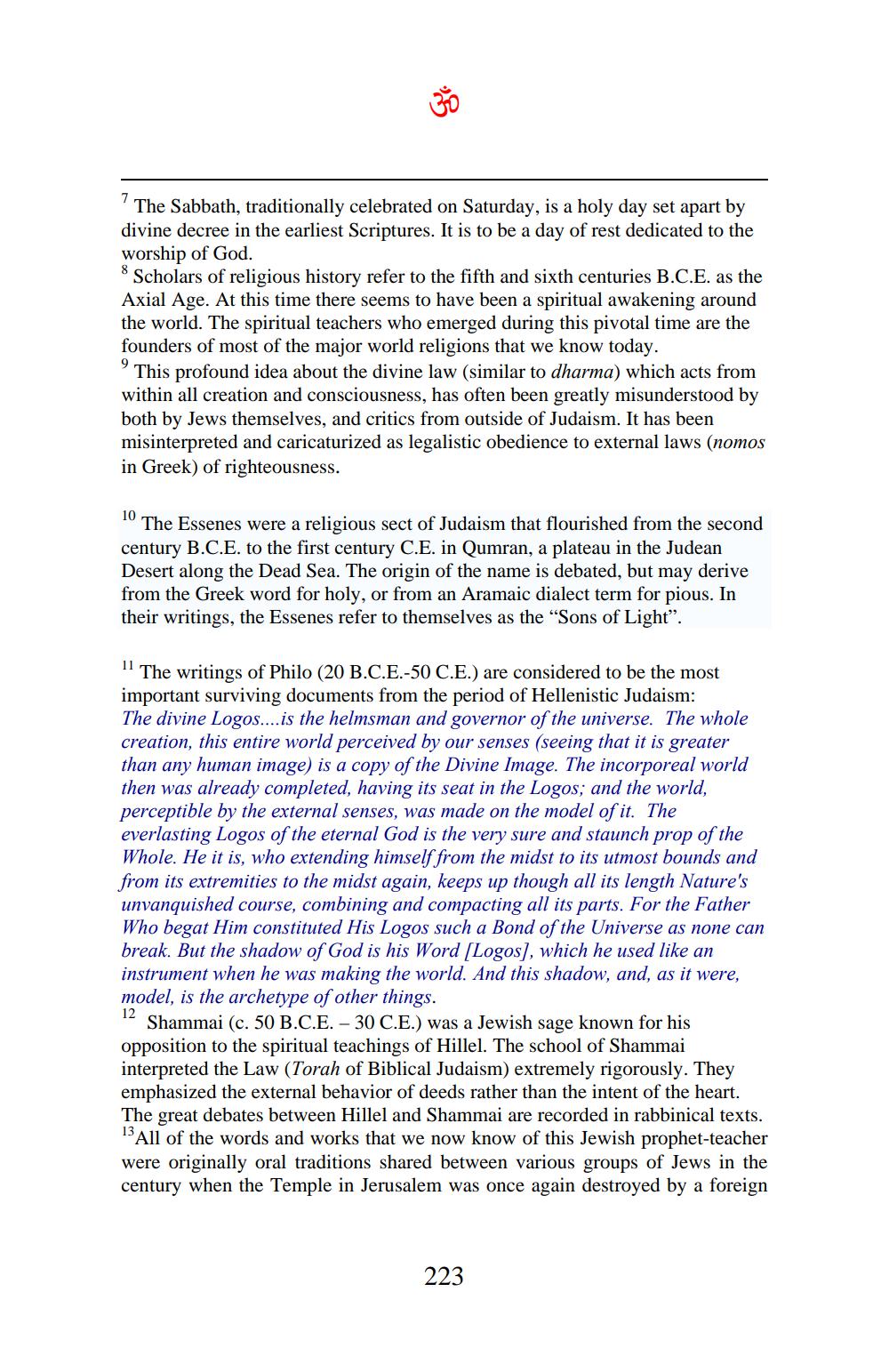________________
The Sabbath, traditionally celebrated on Saturday, is a holy day set apart by divine decree in the earliest Scriptures. It is to be a day of rest dedicated to the worship of God. & Scholars of religious history refer to the fifth and sixth centuries B.C.E. as the Axial Age. At this time there seems to have been a spiritual awakening around the world. The spiritual teachers who emerged during this pivotal time are the founders of most of the major world religions that we know today.
This profound idea about the divine law (similar to dharma) which acts from within all creation and consciousness, has often been greatly misunderstood by both by Jews themselves, and critics from outside of Judaism. It has been misinterpreted and caricaturized as legalistic obedience to external laws (nomos in Greek) of righteousness.
10 The Essenes were a religious sect of Judaism that flourished from the second century B.C.E. to the first century C.E. in Qumran, a plateau in the Judean Desert along the Dead Sea. The origin of the name is debated, but may derive from the Greek word for holy, or from an Aramaic dialect term for pious. In their writings, the Essenes refer to themselves as the “Sons of Light”.
1 The writings of Philo (20 B.C.E.-50 C.E.) are considered to be the most important surviving documents from the period of Hellenistic Judaism: The divine Logos....is the helmsman and governor of the universe. The whole creation, this entire world perceived by our senses (seeing that it is greater than any human image) is a copy of the Divine Image. The incorporeal world then was already completed, having its seat in the Logos, and the world, perceptible by the external senses, was made on the model of it. The everlasting Logos of the eternal God is the very sure and staunch prop of the Whole. He it is, who extending himself from the midst to its utmost bounds and from its extremities to the midst again, keeps up though all its length Nature's unvanquished course, combining and compacting all its parts. For the Father Who begat Him constituted His Logos such a Bond of the Universe as none can break. But the shadow of God is his Word (Logos), which he used like an instrument when he was making the world. And this shadow, and, as it were, model, is the archetype of other things. 12 Shammai (c. 50 B.C.E. - 30 C.E.) was a Jewish sage known for his opposition to the spiritual teachings of Hillel. The school of Shammai interpreted the Law (Torah of Biblical Judaism) extremely rigorously. They emphasized the external behavior of deeds rather than the intent of the heart. The great debates between Hillel and Shammai are recorded in rabbinical texts.
All of the words and works that we now know of this Jewish prophet-teacher were originally oral traditions shared between various groups of Jews in the century when the Temple in Jerusalem was once again destroyed by a foreign
223




